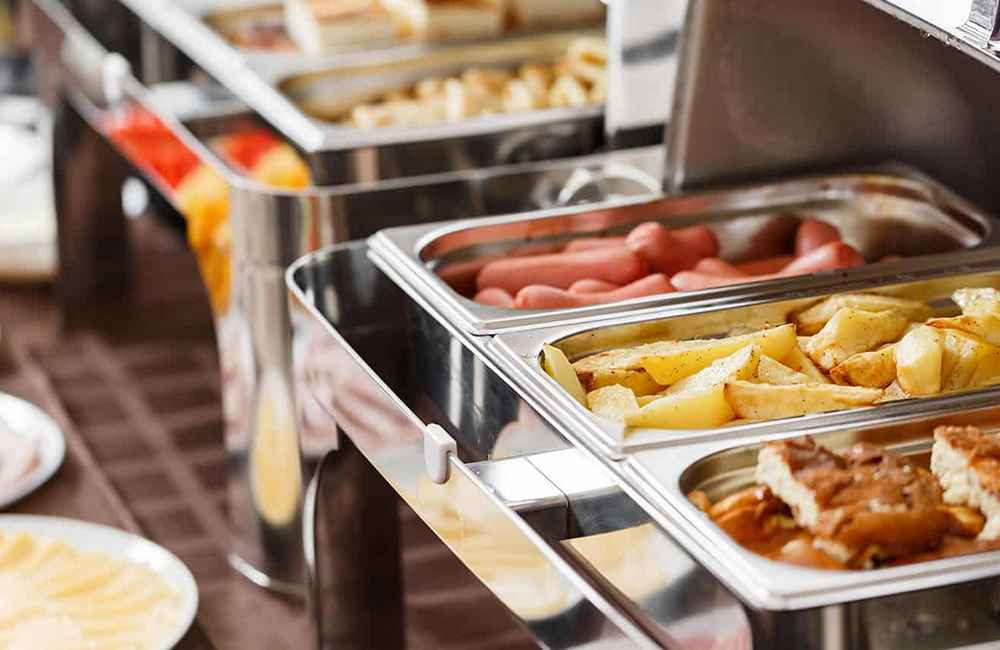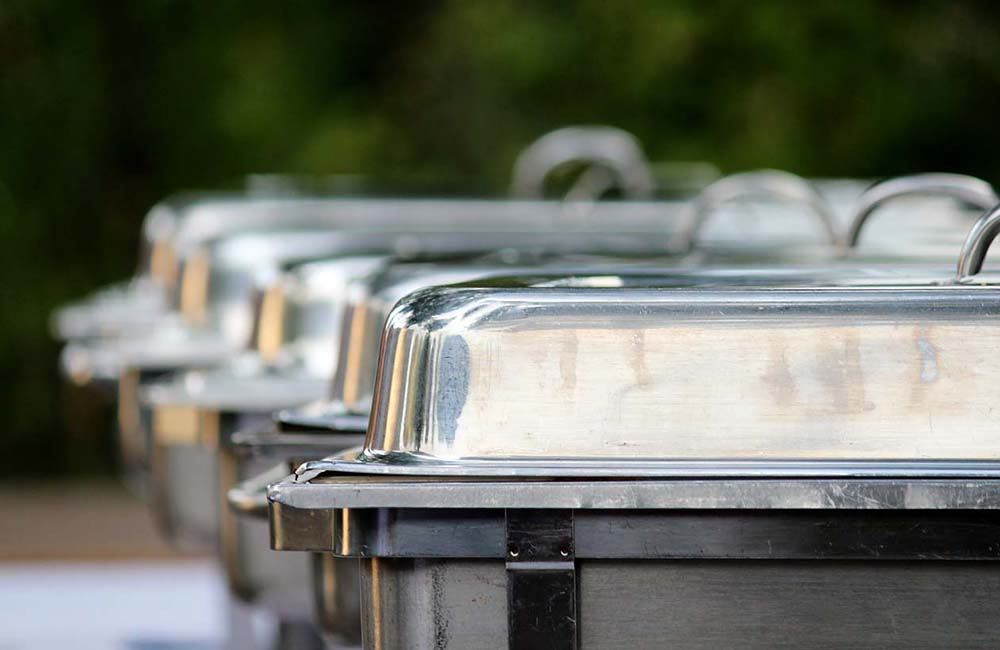Keeping foods at the right temperatures is crucial not only for preserving flavor but also for safety. For restaurants and caterers, it’s crucial to keep food out of the danger zone, whether they’re serving hot or cold food.
But how do restaurants and caterers keep food cold or keep food warm? In 2023, food businesses have many options for keeping foods at desirable temperatures.
Holding Temperatures for Hot and Cold Foods
The Food and Drug Administration (FDA) has developed standards for keeping foods out of the danger zone. Restaurants and caterers need to understand the proper holding temperatures for different types of foods to prevent food poisoning and preserve flavor.
The “danger zone,” as the FDA calls it, is when food reaches a temperature that encourages the growth of disease-causing bacteria. The “danger zone” is between 41°F and 135°F.
Hot foods should always be kept hot, and cold foods should always be kept cold to help reduce the risk of foodborne illness.

Standard Temperature for Cold Foods
According to the FDA, frozen foods must remain frozen. In addition, cold foods should be kept at 41°F or below to keep them out of the danger zone.
Keep Food Warm Temperature
For hot foods, the proper hot food hold temperature is 135°F or above. If a roast is cooked properly, it may be held at 130°F or above.
If a restaurant or caterer is reheating food made in-house, the food must first reach an internal temperature of 165°F for 15 seconds. The FDA suggests reheating food quickly, within two hours.
It’s the responsibility of restaurants and caterers to ensure that their foods are kept at the proper holding temperatures.
How Restaurants Keep Food Warm
Restaurants have many options for keeping food warm. These options are designed to keep food that’s already hot at the proper temperature for a more extended period of time.
Along with using the right equipment, restaurants can also help maintain the appropriate temperature by:
- Using thermometers to monitor food temperatures.
- Ensuring that food is covered (which also protects against contaminants).
- Throwing out any food items that have been sitting below 140 °F for a few hours.
- Stirring food frequently to ensure even heat distribution.
As for equipment, here’s how to keep food warm:
Warming Ovens
To keep hot foods hot, restaurants often use warming ovens, or holding cabinets. Warming ovens do an excellent job of keeping food warm until it’s ready to be moved to the customer’s plate or a steam table.
Most foods can be kept warm in one of these ovens, including vegetables and even rice.
Warming ovens also have other uses. For example, they can be used to heat plates or proof bread dough. They’re versatile pieces of equipment and make a great addition to any commercial kitchen.
Round Warmers
For liquids that need to stay hot, like soup, restaurants can use round warmers (also known as soup warmers).
These warmers will keep soups and other liquids at safe temperatures for long periods. They can also be used to melt cheese, making them very versatile.
Drawer Warmer
Many restaurants also use drawer warmers to help keep hot foods hot and ready for serving. They’re commonly used for warming potatoes, rolls, and tortillas.
Models may come with a single drawer or multiple drawers. Along with the temperature, warming drawers will also allow you to control the moisture level inside.

Food Warmer Container
To keep deliveries hot, restaurants can use food warmer containers. These insulated containers do a great job of keeping foods warm for short periods of time while they’re in transport.
Some insulated containers can keep food hot for several hours.
How To Keep Food Warm for a Party
Caterers don’t always have the luxury of having a big commercial kitchen to keep food warm. However, they still have several options for keeping food warm for a party.
Catering Warmers
A catering warmer is also known as a tabletop warmer. They’re portable and are powered by chafing dish fuel.
These special warmers can keep food hot for hours, making them perfect for a party.
Steam Tables
Both caterers and restaurants can use steam tables to keep pre-cooked food at a safe temperature. While they can’t be used to cook food, they can be used to bring the temperature back up to a safe level.
Steam tables use heated serving trays to keep food hot. They’re commonly used at the buffet and self-service stations.
These tables can have open or sealed wells.
- Sealed wells have built-in drains and a covered heat source. Cleanup is quick and easy because there’s no need for a spillage pan. However, the moisture it produces makes it a poor choice for crispy food.
- Open wells can be used for both dry and moist heating. However, spillage pans will be required for moist heating.
Rethermalizer
Rethermalizers are another option for keeping pre-cooked foods at safe temperatures. In fact, these units are designed to bring cold foods back up to safe holding temperatures. They heat food quickly, which can save caterers a lot of time on preparation.
How Restaurants Keep Food Cold
Just as restaurants must keep hot foods hot, cold food must also be kept cold. Fortunately, it’s much easier to keep cold foods cold.
Of course, refrigerators and freezers do a great job of keeping cold foods at safe temperatures. However, restaurants that have self-service stations or cold buffets must use other equipment to keep these foods at safe temperatures.
Cold and Ice Buffets
For cold buffets and salad bars, restaurants typically use cold and ice buffet stations. These stations have wells that are insulated to help keep food colder for longer.
Cold Chafing Dishes
Chafing dishes are typically associated with hot food, but they can also be used to keep cold food cold. Restaurants fill the bottom of the dish with ice and cold water.
How To Keep Food Cold at a Party

When caterers need to keep cold food at a party, they have a few options:
Catering Coolers
A catering cooler is a simple way to keep food cold. These insulated containers can keep food chilled for hours. Caterers can also use portable meat coolers to keep meat and seafood fresh until they’re ready to be cooked.
Serving Bowls with Ice Chambers
For more delicate items, like salad, caterers can use specialty bowls with built-in ice chambers to keep foods cold without affecting the texture or quality.
Final Thoughts
Restaurants and caterers must take steps to keep food at proper holding temperatures. Keeping food out of the danger zone reduces the risk of illness and helps preserve the dish’s flavor. Investing in the right holding equipment is crucial.
Keeping foods at the right temperatures is crucial not only for preserving flavor but also for safety. For restaurants and caterers, it’s crucial to keep food out of the danger zone, whether they’re serving hot or cold food.
But how do restaurants and caterers keep food cold or keep food warm? In 2023, food businesses have many options for keeping foods at desirable temperatures.


